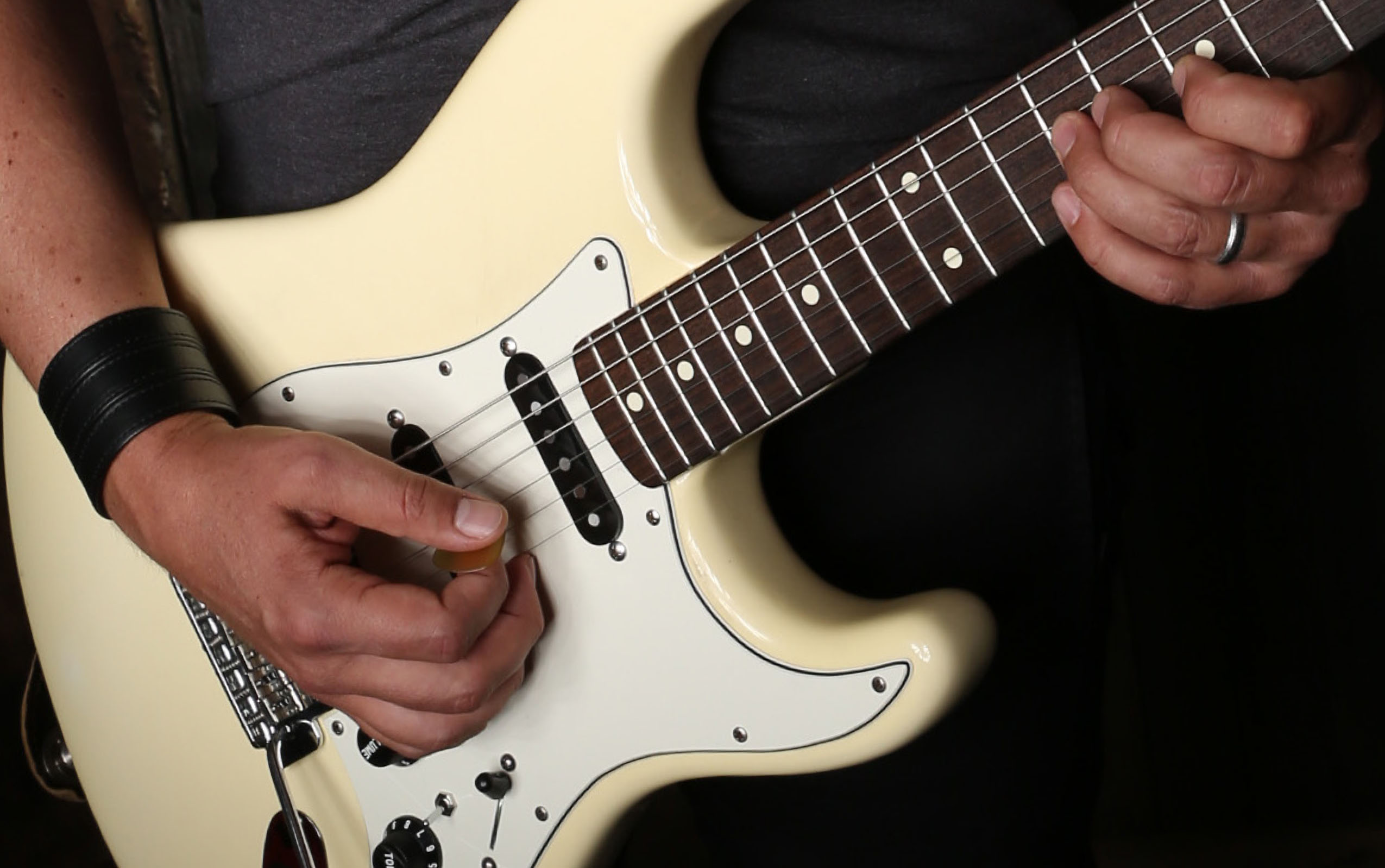When I was learning music I was influenced in two different ways: by the book and on the street. By this I mean that I had everything that I learned from my theory lessons in one box where all the by-the-book stuff lived, and then everything I picked up from my own record collection resided in a separate box. Whenever there was opportunity for crossover was when things really got interesting.
This is one of those lessons.
In pop music, as a guitarist I want to play bluesy, while at the same time adhering to the key center and chord structure, which very often is overwhelmingly Major. If I go for straight up Major Pentatonic licks I wind up sounding country, but if I go for Minor Pentatonic (or “blues” Pentatonic) licks, I’m very often just plain wrong. I had learned that you could switch between the two scales in parallel relationships (as in a Major Pentatonic to a Minor Pentatonic). But the question of when and how, and how long can you spend on each one is the issue. This is where I turned to my record collection to find this answer. It was evident on so many songs, but the two guys that really showed me the way are Eric Clapton and Angus Young.
Let’s start with Eric. Two of his solos were particularly informative for me on this, one is “Crossroads,” which is obviously a blues, but in it he effortlessly switches between Major and Minor Pentatonic using trademark licks and fingerings. The other solo of his that applies these licks and fingerings in a more pop context is the one on “Badge.” You will not find a guitar solo that is more chock full of amazing licks that flirt between Major Pentatonic and blues.
Clapton typically has the tonic under his index finger on the top string, and then works between the standard Minor Pentatonic box and fingering two of the parallel major, as in Example 1.
In Example 2, in D, we start in the Major Pentatonic fingering at the 10th fret, and then shift / slide into the Minor Pentatonic at the 13th fret. But here we tweak the 3rd Major so that we maintain the Major tonality even though we’re working from a Minor fingering.
Angus takes a slightly different approach in “You Shook Me,” which is perhaps slightly more Albert King inspired, still keeping the tonic under his first finger, but he bends from the second degree of the scale to the flat 3 (or #9, whatever, you nerds).
In another example from “Highway to Hell,” Angus shifts down from the Minor box to the Major box, but here his point of transition is on the 4th string, where he bends from the flat 7 down to the Major 6th, and then plays a fairly straight up Major Pentatonic lick.
In both cases, you really have to listen to how the licks sound in context with the harmony beneath them in order to really appreciate the sound that is achieved. Once you get it into your ear, you will be able to find your own way into using this kind of approach.
Thanks for reading!


